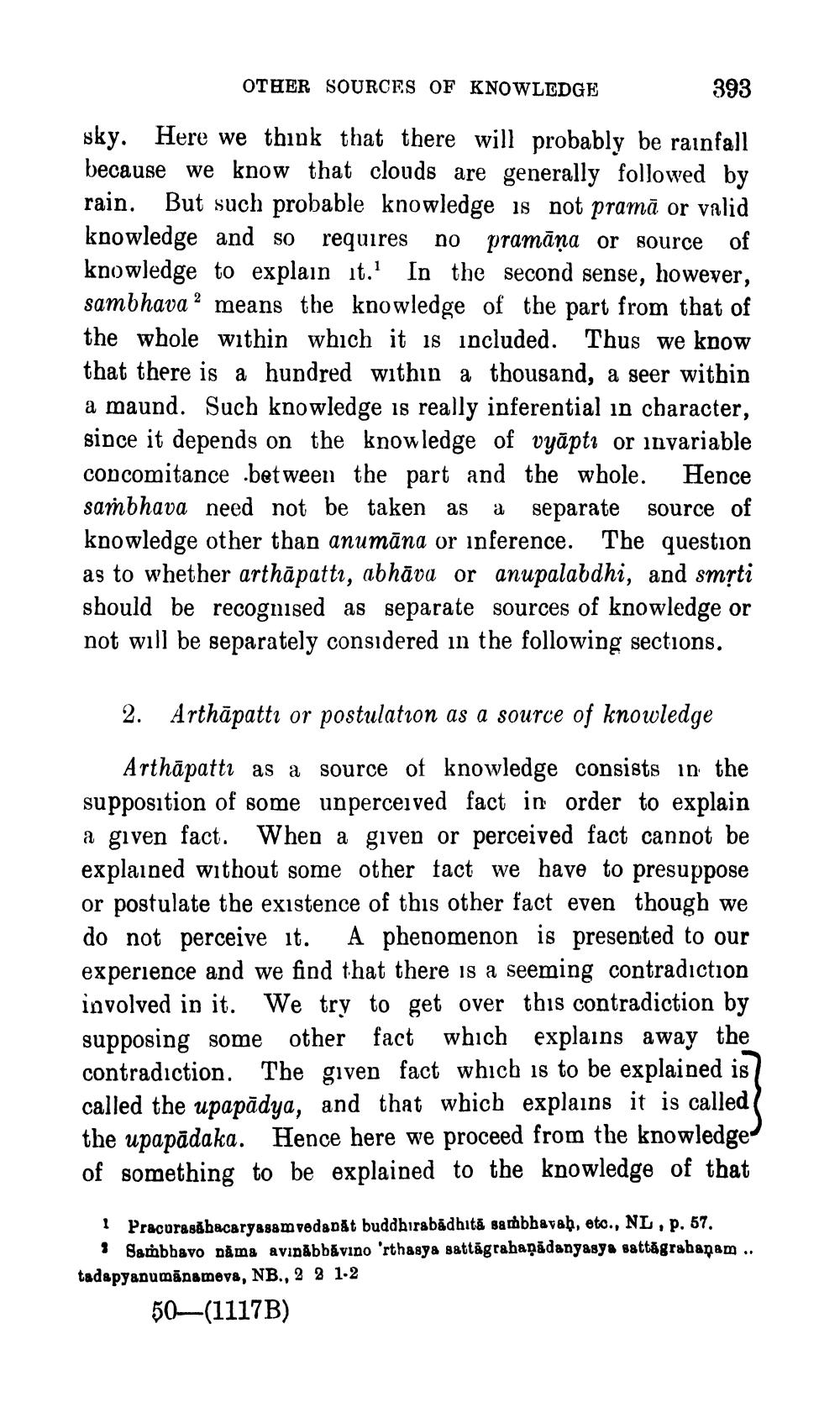________________
OTHER SOURCES OF KNOWLEDGE
393 sky. Here we think that there will probably be rainfall because we know that clouds are generally followed by rain. But such probable knowledge is not pramā or valid knowledge and so requires no pramāņa or source of knowledge to explain it. In the second sense, however, sambhava? means the knowledge of the part from that of the whole within which it is included. Thus we know that there is a hundred within a thousand, a seer within a maund. Such knowledge is really inferential in character, since it depends on the knowledge of vyāptı or invariable concomitance between the part and the whole. Hence sambhava need not be taken as a separate source of knowledge other than anumāna or inference. The question as to whether arthāpattı, abhāva or anupalabdhi, and smộti should be recognised as separate sources of knowledge or not will be separately considered in the following sections.
2. Arthāpattı or postulation as a source of knowledge
Arthāpattı as a source of knowledge consists in the supposition of some unperceived fact in order to explain a given fact. When a given or perceived fact cannot be explained without some other fact we have to presuppose or postulate the existence of this other fact even though we do not perceive it. A phenomenon is presented to our experience and we find that there is a seeming contradiction involved in it. We try to get over this contradiction by supposing some other fact which explains away the contradiction. The given fact which is to be explained is called the upapādya, and that which explains it is called the upapādaka. Hence here we proceed from the knowledge of something to be explained to the knowledge of that
1 Pracorasābacaryasam pedanåt buddhirabadhită samhbhavah, eto., NL, p. 57.
3 Sambhavo nama avinäbbăvino 'rthasya sattăgrahaņādanyasya sattágrahanam .. tadapyanumānameva, NB., 2 2 1.2
50(1117B)




